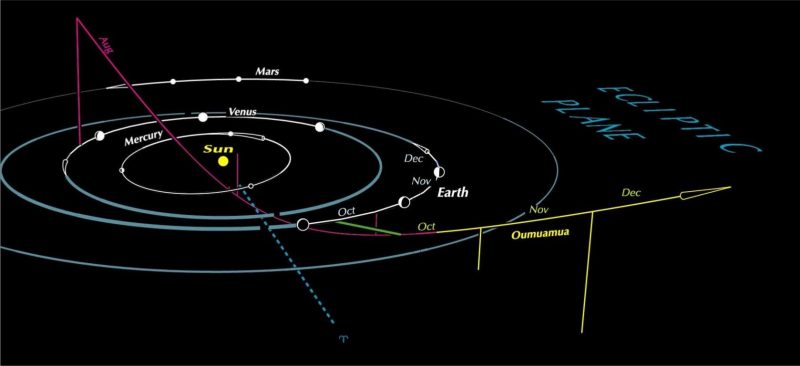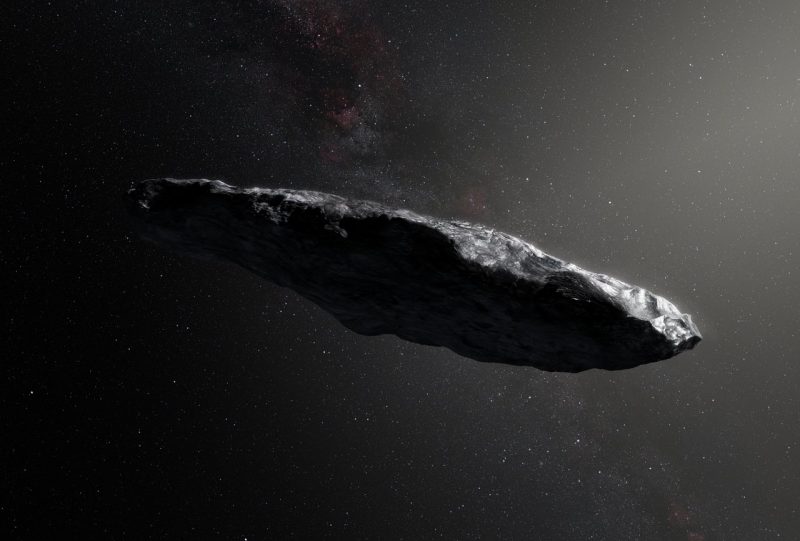
Editor’s Note: One of the most exciting discoveries of 2017 was that of Oumuamua – the first known interstellar asteroid – which must have traveled through space for millions of years before its chance encounter with our star system. This chart and explanation of Oumuamua’s path through our solar system originally appeared at Guy Ottewell’s blog. Used here with permission.
This diagram shows the paths of the four inner planets in October, November, and December of 2017. The path of Oumuamua is shown from August onward. Its path is drawn in magenta before its October 19, 2017 discovery, and then in yellow. Stalks connect it to the ecliptic plane, that is the Earth-sun plane, at the beginning of each month.
Oumuamua arrived from the north, at an angle of about 33° (its inclination of 123°, or 90°+33°, means that the direction is retrograde, or opposite to the general motion of the planets). As with all travelers on huge orbits, like long-period comets, only the innermost, shortest, speediest part of the orbit is on the other side of the plane.
It descended through the plane on August 24, inside the orbit of Mercury; was at perihelion (closest point to the sun) on August 30. If you look closely you can see a sunward tick at that point. It ascended back through the plane on October 13, well outside Earth’s orbit.
It was nearest to Earth (0.276 a.u.) on October 8. A green line connects it to Earth at the nearest moment, which was some days before the discovery.
The view is from 15° north of the ecliptic plane, from a longitude of 350°, and from a distance of 6 astronomical units (sun-Earth distances). The planets are exaggerated 500 times in size, the Sun 5 times. The dashed line shows the vernal equinox direction (the zero point for sky mapping).
Read more: Oumuamua, 1st known interstellar asteroid

Bottom line: That’s enough for now. It was easier than I expected to find orbital elements, and make them work for this graphical representation of Oumuamua’s trajectory through our solar system, but I’ve spent more than half the day (the day before Christmas).











